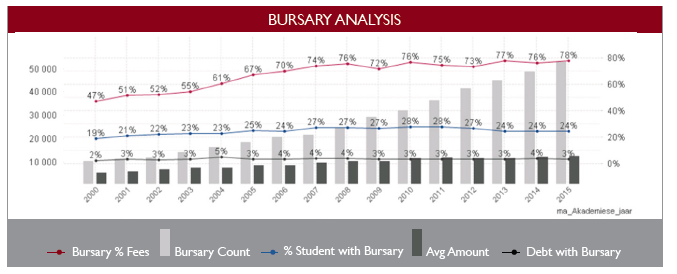The
outcomes of last year’s #FeesMustFall movement emphasised the reality of South
Africa’s unequal society, and highlighted the need for quality higher education
to produce skilled workers to take the country forward.
In the current economic climate and
growing demands on government to stimulate growth and create jobs, fee-free
university education currently is not feasible, but until alternative and
viable solutions are found, universities have no other option but to
adjust tuition and accommodation fees in
a responsible manner.
Stellenbosch University
(SU) and the rest of the sector acknowledge that South Africa has an unequal
society comprising of an affluent and upper middle class that can afford
university education and a large component of lower middle class and poor
students who cannot pay their way. We realise that student fees are a major
concern for many of our students and their families. However, we do not believe
that fee-free higher education is currently feasible.
Stellenbosch University supports
and follows a differentiated approach, with an emphasis on financial support to
academically deserving, poor students:
Students from households with an income of
R600 000 or more a year are in a better position to pay tuition fees.
The National Student Financial Aid Scheme
(NSFAS) supports students from households with an income of less than R122
000 a year.
SU also offers bursaries to students from
households with an income of less that R240 000 a year, a group that is
part of the “missing middle” who do not qualify for NSFAS funding.
- Statistics regarding bursaries (2015 data):
- 24% of all students receive a bursary;
- 78% on average of all student fees are covered by bursaries
- Total
bursaries paid by SU in 2015 = R658,7 million
- R402,8 million own funds & research contracts (R115 million from main budget allocation)
- R255,9 million as agents (including NSFAS)
Of specific concern is the so-called “missing middle” group of students who do not qualify for NSFAS funding, but who also cannot afford university fees. The annual household income for this group ranges from R122 000 up to R600 000. SU has managed to provide bursaries for a portion of this group in the income bracket from R122 000 up to R240 000 per year. However, such initiatives would be jeopardised if SU is not in a position to increase its annual income.
The table above
illustrates the estimated “missing middle” (based on applications received).
The tables below show the increase in bursary allocations over the past years.



